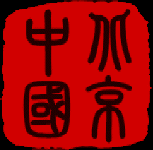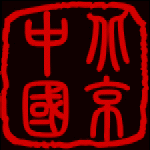Set in forested mountains to the west of Beijing, TanZheSi and JieTaiSi are tranquil retreats in fresh mountain air, scented with burning incence. Charming and hardly changed for centuries, these temples are unusual in that they received imperial support (the Qing rulers preferred Tibetan Buddhism), and both have long been popular with local pilgrims.
TanZhe Temple (TanZhe Si) Situated in the Western Hills, this Buddhist temple lies 45km west of Beijing. The temple name means 'Dragon Pool and Mulberry Tree Temple', due to its proximity to the Dragon Pool and the trees growing in the surrounding hills. Although its name has changed on numerous occasions, it dates back to the Western Jin dynasty (265 - 316). A local saying on the sign confirms its history: "First there was TanZhe, and after there was YuZhou." YuZhou is an ancient name for Beijing. Covering an area 41,600 sq meters, this temple is the largest in the area and one of the oldest. The greenery of the surroundings is spectacular, especially in the spring when the fruit trees are in blossom. There are also lush bamboo gardens. Most of the buildings are in typical Ming and Qing style architecture. The temple primarily comprises of the Hall of Abstinence, the Ordination Altar and the Hall to GuanYin. In the main courtyard on the central axis is a pair of towering and majestic 30m high ginkgo trees (the 'Emperor and Empress'), supposedly planted in the Tang dynasty (618-907) or perhaps Liao Dynasty (916 - 1125), as well as several apricot trees, cypresses, peonies and purple jade orchids. The 'Emperor Tree' was christened the "King of Trees" by Emperor QianLong. "The Emperor's Wife" is supposed to produce a new branch every time a new emperor is born. The complex is extensive, and is said to have provided a model for the layout of the Forbidden City. Above and to the right of the main courtyard lies a rare stupa yard (TaYuan), with stone monuments built in different styles over a period of several centuries and housing the remains of eminent monks. The Hall to GuanYin (Goddess of Mercy), at the top of the western axis, is associated with princess MiaoYan, daughter of Kublai Khan. Legend has it that the princess entered the nunnery here in the 13th century. Within the hall, indentations can be found in the stone on which she always knelt to pray in her devotion to GuanYin. It is said that she was buried within the temple compound and a statue of her is on display here.
JieTai Temple (JieTai Si) JieTai Temple is located 35km west of Beijing and is only 10km from Tanzhe Temple. JieTaiSi, or 'Temple of the Ordination Altar', takes its name from its famous Ming marble ordination altar, built some 1,300 years ago. This altar is nearly 5 meters high and is decorated with exquisite carvings. The temple was first built in the year 622 during the Tang dynasty but most of the buildings here now date from the Qing dynasty (1644 - 1911). The temple sits on a hillside looking more like a fortress than a temple, surrounded by forbiddingly tall red walls. On a clear day, this temple offers an unhindered view of Beijing. Surrounding the main hall are a number of courtyards containing rock formations and ancient twisted pine and cypress trees. It is renowned for its venerable pines - eccentric looking trees growing in odd directions. Indeed, one, leaning out at an angle of about thirty degrees, is pushing over a pagoda on the terrace beneath it. These ancient trees and are the subject of many songs. It is said that the Chinese Scholar Tree, known as the protector of Buddhism, is more than 1,000 years old. Other famous trees include the 'Nine Dragon Tree' which has 9 branches that reach up to the sky like 9 flying dragons, and the 'Mobile Tree' which trembles even when only one branch is slightly touched. The enormous white marble ordination platform (JieTai) is China's largest and intricately carved with figures - monks, monsters (beaked and winged) and saints. Dating from the Liao Dynasty, it is a three-tiered structure with 113 statues of the God of Ordination placed in niches around the base. It is located in Jie Tan Dian (Hall of the Altar of Ordination) in the far right (north west) corner of the temple. Ceremonies conducted on this platform to commemorate the ascension of a devotee to full monkhood required permission from the emperor. Often referred to as the "Beida [Peking University, nominally the best university in China] of Buddhism" for its ability to attract the most promising monastic scholars (along with temples in QuanZhou and HangZhou), it has been the most significant site for the ordination of Buddhist monks for 900 years. Another smaller hall holds a beautiful wooden altar, decorated with dragons in relief. There are also fragrant peony gardens.
Visitor Information Admission to TanZhe Si (tel. 010/6086-2505) is ¥35; the ticket office is open from 8am to 5:30pm in summer and 8:30am to 4:30pm in winter. Admission to JieTai Si (tel. 010/6980-6611) is ¥35; the ticket office is open year-round from 8am to 6pm.
Getting There Both temples are easily accessible by taking bus no. 931 from the PingGuoYuan subway stop (at the west end of line one) to TanZhe Si. Busses run daily 7am-5:30pm, about every 30 minutes. Journey time is about 1 hour. Once at the subway stop, take exit D, turn right and continue straight a few minutes to the bus station; take the plain red and beige, rather than the red and yellow zhi version of the bus. From TanZhe Si, the last stop on this route, walk up the stone path at the end of the parking lot. From there, take bus no. 931 east 10km to JieTai Si, where you reach the site by walking uphill from the bus stop. At weekends, the no. 7 tourist bus runs from the north east corner of QianMen (Sat-Sun 7am-8:30am, every 30 minutes; about ¥50), and includes a stop at the ShiHua Caves. April 15 and October 15. A round-trip by 'taxi' (private car/minibus) to both temples should cost around ¥300. You might need to bargain and refrain from paying until on the way home. We recommend you go on a weekday if possible, by either bus or 'taxi'. You will take the narrow highway 108, a two-lane road that twists and turns its way through the mountains. After passing the steel works and chimneys of industrial FengTai, you will enter another world. | 


